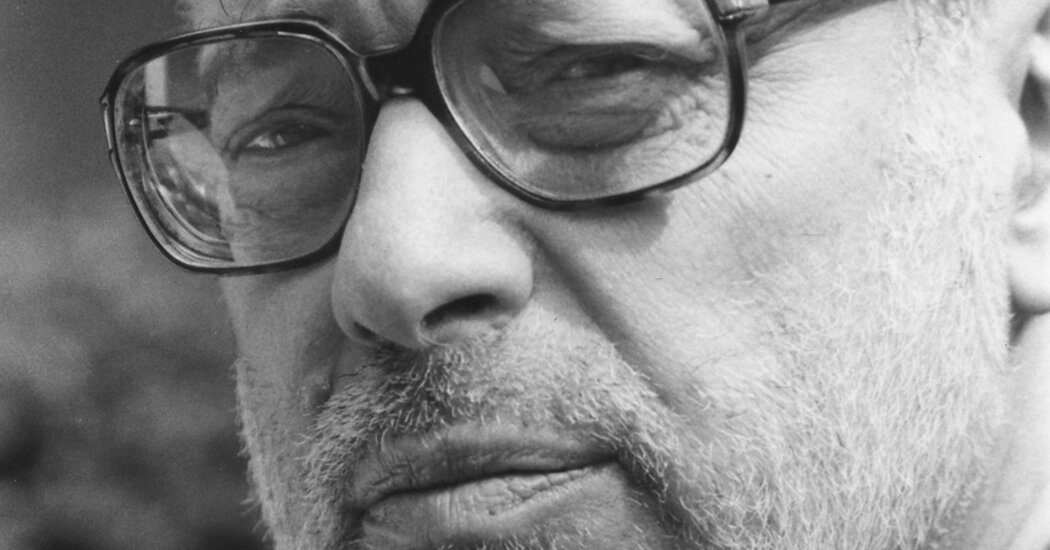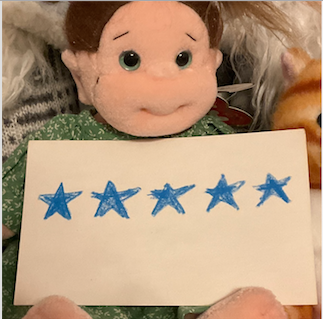Recollections of a Non-Existence: Catherine Lacey’s Biography of X
Few pieces of art are as unanimously disturbing as The Pain Room, a 1979 installation by the mid-20th century iconoclast known as X. Even fewer are the artists—at least in the Western world—who can claim to match the controversies she stirred up, or the enigma surrounding her true identity and origins: An altogether unknown X arrived on the New York art scene in 1972 and was honored with a MoMA retrospective just about two decades later, collaborating with the likes of David Bowie, Kathy Acker, and Tom Waits along the way. As part of her dizzying, trailblazing career, she inhabited at least a dozen nom de plumes—amongst them the socialite Dorothy Eagle; the novelists Clyde Hill, Cindy O, and Cassandra Edwards; the music producer Bee Converse; the feminist publisher Martina Riggio; and the artists Věra and Yarrow Hall—but disavowed being perceived or understood as anything but the single letter that she appropriated as her pseudonym. Now, years after her death in 1996, Biography of X gathers insights from her archives and testimonies from close friends to paint a picture of who X really was, finally unraveling the mystery of her real name and birthplace, and attempting to reach into the depths of her complex relationship with people, performance, and contemporary America. And might I add: it is too, like the incredibly elusive artist at its center, a dazzling work of pure fiction.
This counterfactual “biography” is, in fact, the new novel by the acclaimed writer Catherine Lacey, who is known for her works investigating the fungible nature of identity and its attendant anxieties. Her previous book, Pew, followed a character of similarly indeterminate origins who doesn’t fit into any identifiable race or gender, exploring the question of what happens to a person when nobody can agree upon who or what they may be. Biography of X—which the author professes to have written concurrently with Pew—seems to flip this line of inquiry on its head: If a person refuses to have a unified or singular idea of themselves perpetuated, refuses to be seen a certain way, what then happens to the people around them?
Lacey addresses this question brilliantly by presenting her book as a simulacrum of an actual biography authored by X’s grieving widow, a certain CM Lucca. It is complete with a thorough bibliography, numerous photographs of X’s work and various personas, orderly footnotes, and even front matter that attributes the copyright to the book to the widow, inviting us not just to suspend but eviscerate our disbelief.
Motivated to begin her corrective effort after a spurious, unauthorized biography of her deceased wife comes to her attention, Lucca is soon drawn irrevocably into the quicksand of secrets and betrayals that served as the foundations of X’s story; secrets that stretch far beyond the mystery of her true identity and are far crueler than any artworks she had hitherto deigned to make public. In parsing the murky details of X’s life and legacy in her attempt to uncloak the myths surrounding her, Lucca finds herself contending with the experiences of those once similarly enchanted by her wife—those who were taken to her just as serendipitously, and quickly abandoned just as she’d feared she may one day be—and is bought to reckon with the manifold ways in which she—once a much sought-after investigative journalist who won a Pulitzer for her efforts, and now “no one in particular, uncalled for”—finds her own self changed by her devotion to the woman she loved and was frustrated by but barely knew. Having remained unquestioning of X’s extreme need for privacy during the latter’s lifetime, believing it a marker of her artistic genius, she is now driven to know the real name of the woman who so radically reshaped her own path. And the more she tries to learn about her compulsion toward a fictitious identity, the more obsessed she becomes with the history of the Southern Territory, where X is rumored to be from.
Biography of X is an extravagantly subversive, expertly layered novel that employs a fictional biography to examine the fiction of identity, as well as the fictions that exist within our interpersonal relationships and circumscribe our experiences of love, grief, art, and abuse. However, what makes this book-within-a-book all the more ambitious and arresting is Lacey’s decision to have it set in an alternative timeline, one where the reforms enacted by a socialist government in the American North (including a “plan to phase in same-sex marriage rights” and “a near-abolition of the prison system”) lead to a “Great Disunion” at the end of the Second World War, with the aforementioned “Southern Territory” seceding to form a fascist theocracy behind its own version of the Iron Curtain. It is within this setting that the author also refigures the art world for her readers, creating space for a figure like X—the polarizing artist who is indomitable, larger than life, and unabashedly female—to take the stage. As Lucca summarily lets on to her readers, an uneasy reunion of the divided territories takes place soon after X’s death, allowing her to travel further from the familiar ground where X made her name and into the alien nation of her birth—one where people’s “ability to love a concept as large and appealing as God was used against them again and again”—in order, finally, to understand her.
Recently, speaking about the book at Foyles Bookstore in London, Lacey told the audience how she constructed the alternative timeline solely to suit her more basic requirements for the novel—her fourth, in addition to a short story collection and a work of nonfiction she describes as “high-brow gossip”—which she envisioned as a “badly behaved” artist biography set in the 20th century and written by a bereaved spouse. She claimed she wanted it to concern two women without them having to explain their gender or relationship in the manner they would have at the time, “and so I had to rewrite all of American history just so a lesbian couple could just be.”
While this gruesome vision of America may indeed be mere a byproduct of X’s persona, it allows the novel a nuanced examination of the fictions of national and religious identities, many mutually undiscerning versions of which war against each other in our present political reality. At the same time, it urges the reader to see this reality—one where the rallying cry of “making America great again” is steadily gaining ground—as something malleable, formed not of unshakeable monolithic fact but a series of chance occurrences over the course of history. Indeed, as Lucca confronts the arbitrariness and fragility of X’s personal history and of the wider historical context it took shape within, we as readers are nudged to pay attention to “how closely our lives drift past other lives, how narrowly we become ourselves and not some adjacent other, someone much nearer and much too far away.”
Counterfactual as it may be, Biography of X thus has something verisimilar about it, and its speculative retake on history makes the truth of the mid-20th century shine brighter. This does, in part, owe itself to the way Lacey collages real historical figures into the narrative: Emma Goldman, the anarchist political activist, becomes part of the progressive (but not utopian) government in the Northern Territory, and a botched resistance against the Southern Regime—of which X turns out to have been an integral part—involves Ted Gold and Kathy Boudin, who were actual revolutionaries with the Weather Underground. Cultural icons like David Bowie, Susan Sontag, Kathy Acker, Patti Smith, Frank O’Hara, and the lesser-known Connie Converse are recast variously as X’s friends, collaborators, and detractors. X herself is a combination of several real-life personalities, including Louise Bourgeois, Sophie Calle, and Tom Waits, whose works and words are here transmuted into hers.
In one amusing section, Lucca informs readers of how a handful of Southern separatists killed 14 male artists, including Duchamp, Pollock, and Kandinsky, in what became known as the Painters’ Massacre of 1943—a minor incident, one that, years later, leads the critic “Richard” Cusk—an inversion of the British writer Rachel Cusk—to publish an essay about how the dominance of female artists “fundamentally changed the way that men made art,” and causes Yves Klein and Larry Rivers—art world nobodies in this timeline—to stage a guerrilla protest against the Guggenheim’s failure to exhibit any male artists in over a decade. By purposefully blurring the lines between fiction and history, Lacey here is able to consider the misogyny, xenophobia, and capitalist exploitation prevalent in our world—and especially the art establishment—in a humorous, defiant vein.
The figure of X, too, is deployed to interrogate the blurring distinction between reality and performance. For instance, through X’s The Pain Room, the art installation I mentioned earlier, Lacey urges us to critically consider the art world’s reliance on the audience’s relation to pain and shock. The cruelty of this artwork mirrors X’s manipulative personality, inviting us to once again ponder the age-old question of whether or not to separate the art and the artist (at the talk in London, Lacey asserted that her books aren’t meant to “answer anything” but to merely give herself and readers “some space to think”). At the same time, Biography of X also interrogates the relationship between art and life; as Lucca uncovers more details about X’s past in the Southern Territories, she is forced to re-evaluate X’s oeuvre: The Pain Room then assumes the added dimensions of a political statement against the violent, authoritarian theocracy she grew up in, and both her duplicitousness and refusal to be confined to a single identity are too recolored in context of her vertiginous experiences within it.
Three years after Pew, Biography of X is an accomplished work that further cements Catherine Lacey as a particularly robust novelist of ideas who is just as luxuriant with her vivid characters and tightly wound plot. It is a richly kaleidoscopic exploration of the burdens of love and identity, one that pushes the boundaries of both form and genre further than has been attempted before and triumphantly declares itself: “There was no con. There was no crime. There was only fiction.”
***



